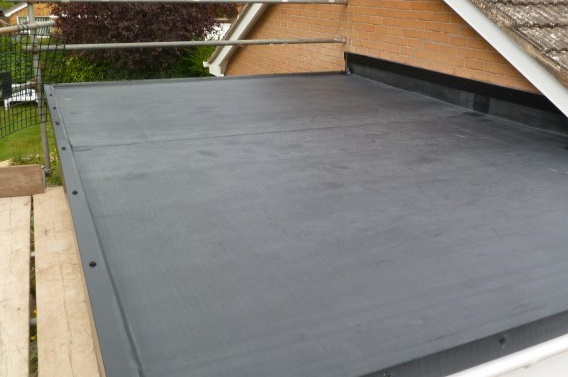Your roof plays a vital part in keeping you safe from the elements of nature which include heavy rain, snow, high winds and the general climate. It keeps the sun off, the heat in and the rain out! However, this comes at a price, you must look after your roof with due care and attention; otherwise you could end up facing a roofing disaster that could not only hurt you, but also hurt your wallet and belongings in the process!
So what can go wrong with a roof? There are many examples of what can happen, here we will talk about a few and how you can avoid them before they happen. However don’t despair, if you find yourself with a problem with your flat roofing in Stratford-upon-Avon, then marcus roofing can set you right.
Leaks
The first disaster on our list is the prospect of leaks. Now you may think a leak isn’t a huge deal and can be fixed easily, whilst this is partially true. However, if you don’t catch the leak in time, it can cause considerable damage, not only to the internal structure of your roof, think about water and wooden beams in your attic. You are looking at rot if the problem is not resolved and this could result in structural failure!
In addition to this, leaks are not always easy to spot. You may be unfortunate enough to not spot it until it has cause considerable damage. Here is what to look out for:
- Brown patches and streaks on the ceiling may indicate a roof leak caused by either damaged or blocked gutters, or a hole in the roof itself.When these patches appear, you may already have more severe water damage in your roof and ceiling
- Unexplained puddles of water on the floor and dripping water along the ceiling and walls, this could point to a problem with your roof.
- Sagging or drooping ceilings and wallpaper. When a roof leak becomes extensive or severe, you will notice the ceilings will start to droop and sag. This is a very bad sign as it means that the water damage has become extensive to the point where collapse of the roof is inevitable. It’s not a matter of if; it’s a matter of when.
- Mould. A big sign of damp due to leakage.
So if you suspect you have a leak, get it checked out before the final point on this list! Even if you see the brown patches, don’t let it go as far as a sagging celling or you could end up ruining your home!
Weather!
The weather in the UK is very unpredictable. One day you could have sunny skies and warm weather, the next you could have freezing rain! It’s all because we live on an island, so we get our weather from different sources which include the Atlantic Ocean, and the Gulf Stream.
The UK is small compared with the other countries in the northern hemisphere and this is exactly why we are heavily influenced by the ocean, compared with other European countries. This explains why our weather is so unpredictable
So how will this affect you roof? Well here are a few things that extreme weather can do to your roof. You can’t really prevent this from happening but you can get right onto repair and know what to look out for before it becomes too serious!
- Extreme wind can remove tiles from your roof, exposing the underlay which is then open to the elements, causing it to decay faster.
- The wind can also, if powerful enough, blow over power lines and trees, right onto your roof. Causing huge damage!
- The moisture from rain can collect on your roof, leading to damage and rot if left unchecked.
- Another major influence is winter weather.If your attic has a temperature that is above freezing it can cause the snow on the roof to melt and run down the roof. As the snow runs down, it hits the colder parts and refreezes. This buildup of ice and can cause damage to the shingles.
- Acid rain sounds like a frightening concept, but it is very much a real thing. It can tear down building materials, such as those used for roofing.
So what is acid rain? It is rain that has been mixed with chemicals, such as sulphur dioxide and nitrogen oxides. These chemicals are commonly found in the atmosphere due to every day pollutants, such as car exhausts and factory fumes.
Acid rain changes the composition of many roofing materials over time. Clay and concrete, although durable, will change weight and colour when exposed to acid rain
There are countless other things that can go wrong with a roof, it’s best to inspect yours regularly and speak to a professional at the first sign of a problem. If you are unsure, it never hurts to check!







Recent Comments